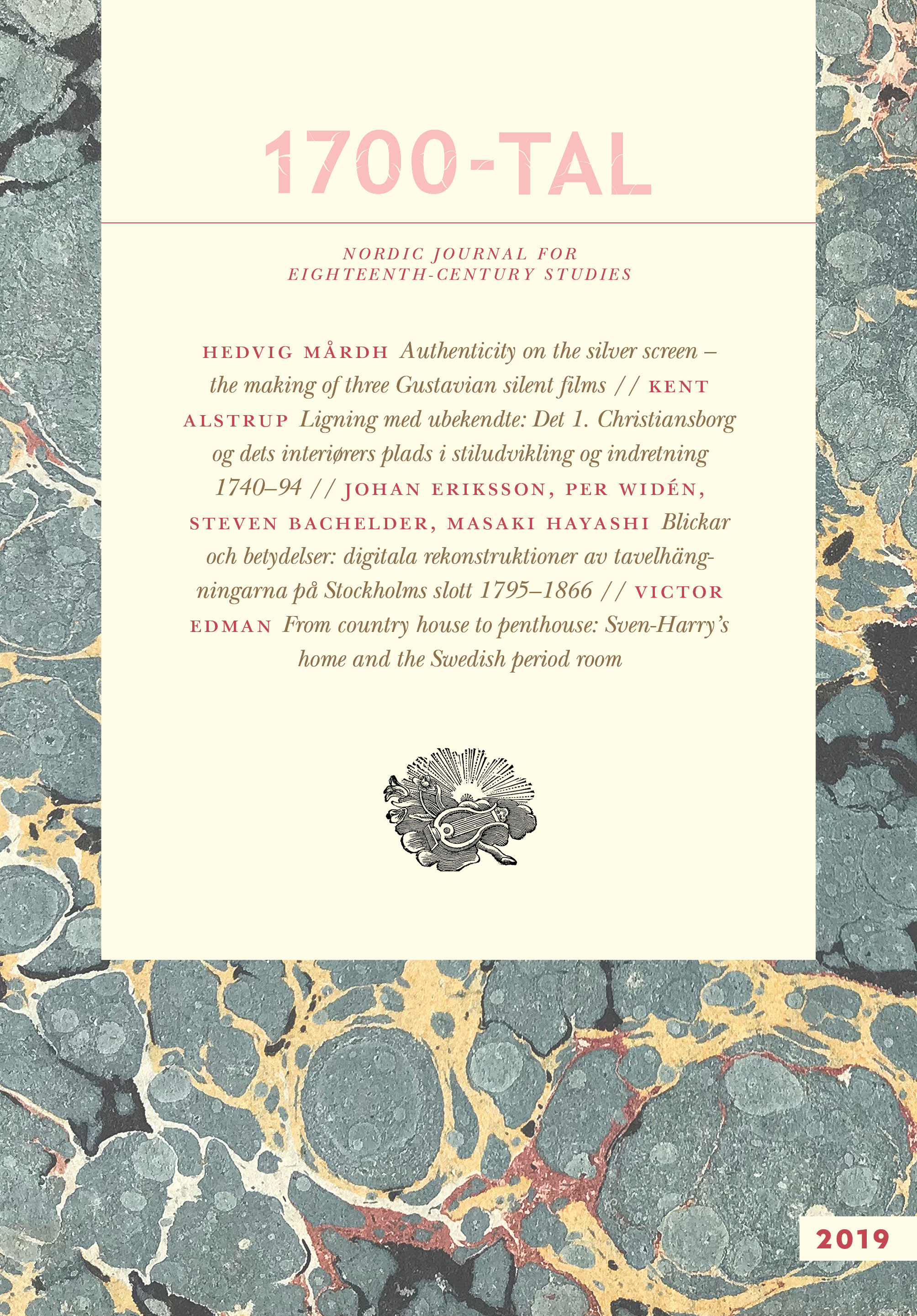Authenticity on the silver screen
The making of three Gustavian silent films
DOI:
https://doi.org/10.7557/4.4879Abstract
The three silent films 'Gustaf III och Bellman' (1908), 'En afton hos Gustaf III på Stockholms slott' and 'Två konungar' (1925) are illuminating examples of how the Gustavian period was reinvented, negotiated and visualized at the beginning of the twentieth century. In the article, object-based and visual analysis of the films, together with reception studies, are used to explore the production of period film and the strategies film directors developed in order to mediate a feeling of authenticity on screen. These strategies, based on a performative approach to authenticity, shared a number of similarities with professional art-historical practice at the turn of the twentieth century. The three case studies reveal not only how the Gustavian period was staged, but also the overlapping professional structures where filmmakers relied on specialists in the organization of material things, for example museum curators and art historians. Through their authority as experts they were able to help authenticate film productions and facilitate access for the film crew to historic sites. Likewise, the production of period films helped shape public history and influenced the management of heritage sites and museums, initiating reconstruction projects, for example.









